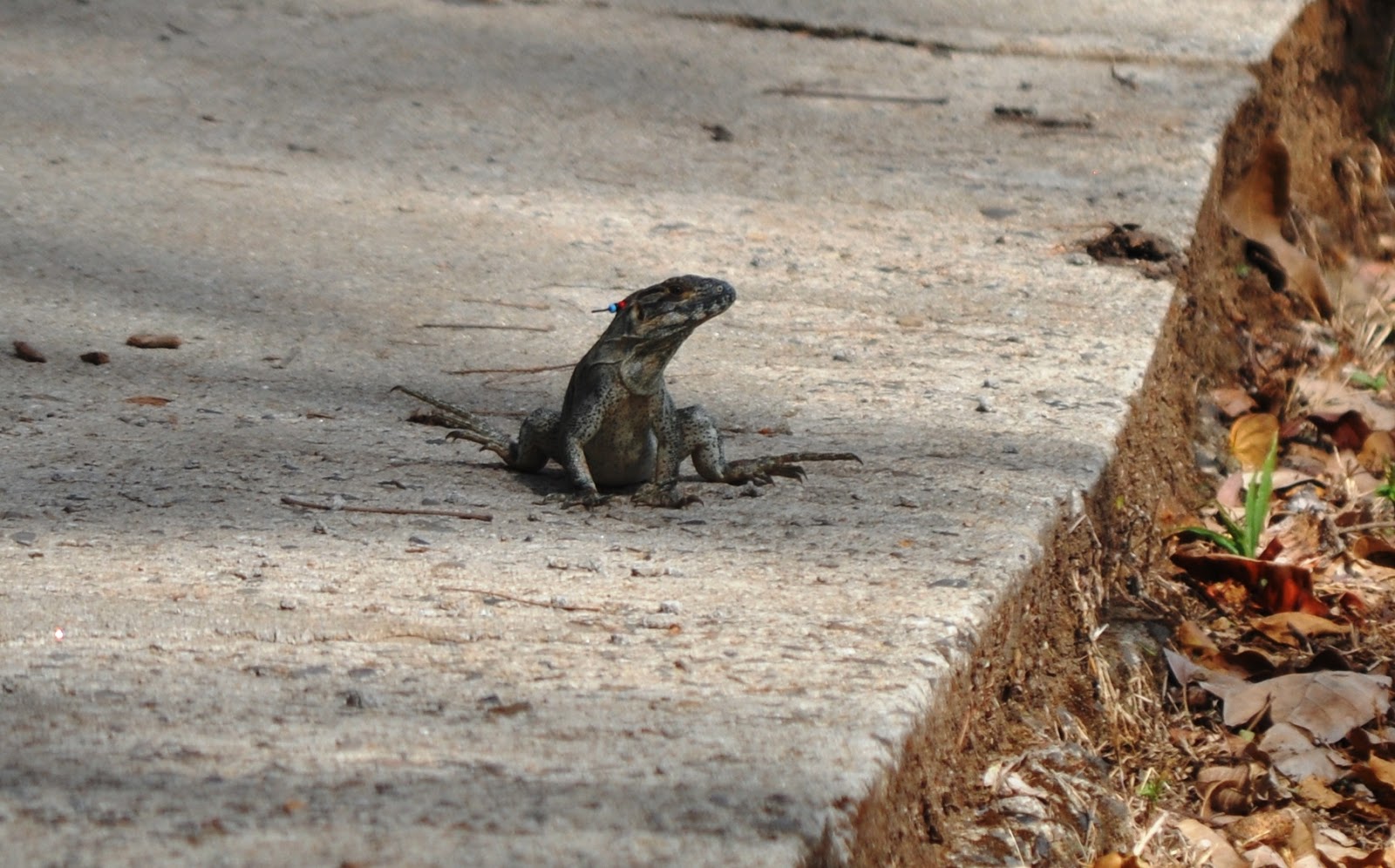 |
| Portia in Palo Verde |
Jumping spiders are incredible for their beauty and likely cognitive powers. This one jumped on the camera right after this shot.
 |
| Crane Hawk, Geranospiza caerulescens |
That's a
C. similis predator. Walking in between GGG and little PbKR, I felt a gust of air and saw a silent but potentially deadly raptor fly in front of me, legs outstretched. A mad scramble and PbKR was gone, and several large iguanas were racing up large trees. I sat for the rest of the afternoon in hopes PbKR was safe. Yes, this is a natural predator, birds gotta eat, too, but I was concerned I'd actually provided incoming visual cover to the predator. The next morning all expected iguanas came out to bask, PbKR from his cement block.
 |
| Leaf Cutter Ant |
At times, I wait at least an hour for an iguana to come from a tree or ground refuge in hopes I can test their reaction to a novel object. While waiting, I play insect games -- How Many Insects in the Next 5 Minutes? How Many Flying? Largest. Most Annoying (guess the winner!). To my delight, one of my haunts provides little green flags carried over long distances. It's a beautiful and incredible sight, and then the ants continue into their ground nest opening.
 |
| OYBr |
Orange-Yellow-Brown was caught at the base of the Lower Tree where he has a refuge in a tree root. He traverses the road and climbs much smaller trees in the Woods.
 |
| YPbBr |
Sometimes even a smallish iguana takes on a larger climbs with equal prowess. Yellow-Pale Blue-Brown climbs the largest tree in the Woods across the road.
 |
| Upside Down |
This refuge is called "Bird House at Lower Tree," and this day the still unmarked male managed to get himself in upside down. He struggled enough to make me wonder if he was getting eaten by a snake but righted himself.
It sounds straightforward to test iguanas -- put out the object, and see what they do. However, field work will also end up at least on its side if not upside down. The iguana above comes down this tree facing North, follows the right side of the drive for a bit, crosses, and follows the left side of the drive, then moves across the road. The novel object needs to be along this route or it will simply be ignored. This may be evidence of habituation to such objects, outright avoidance, safety produced by routine, or something else.




































